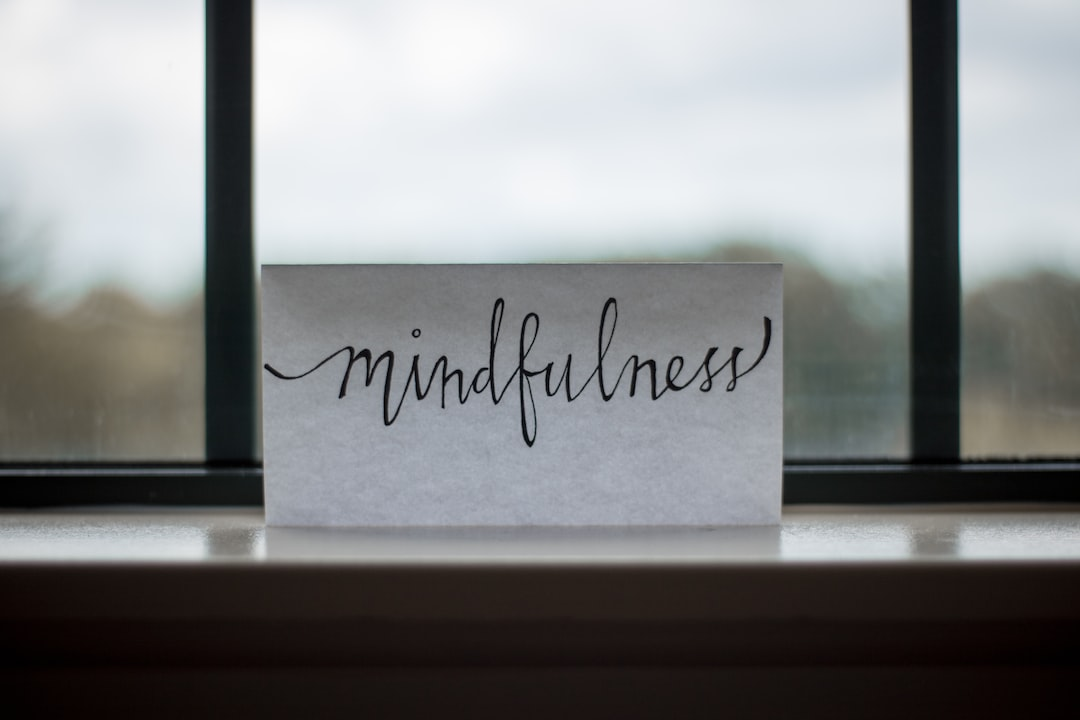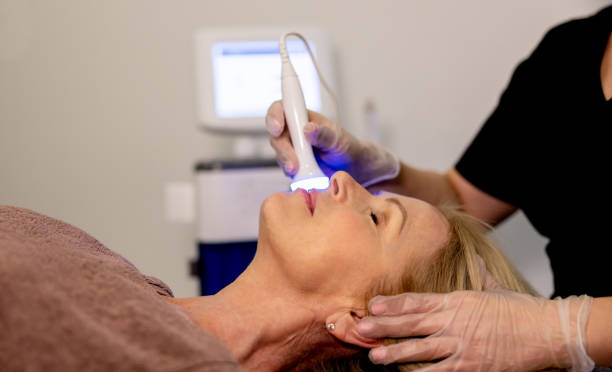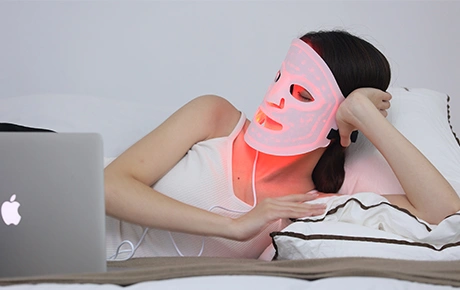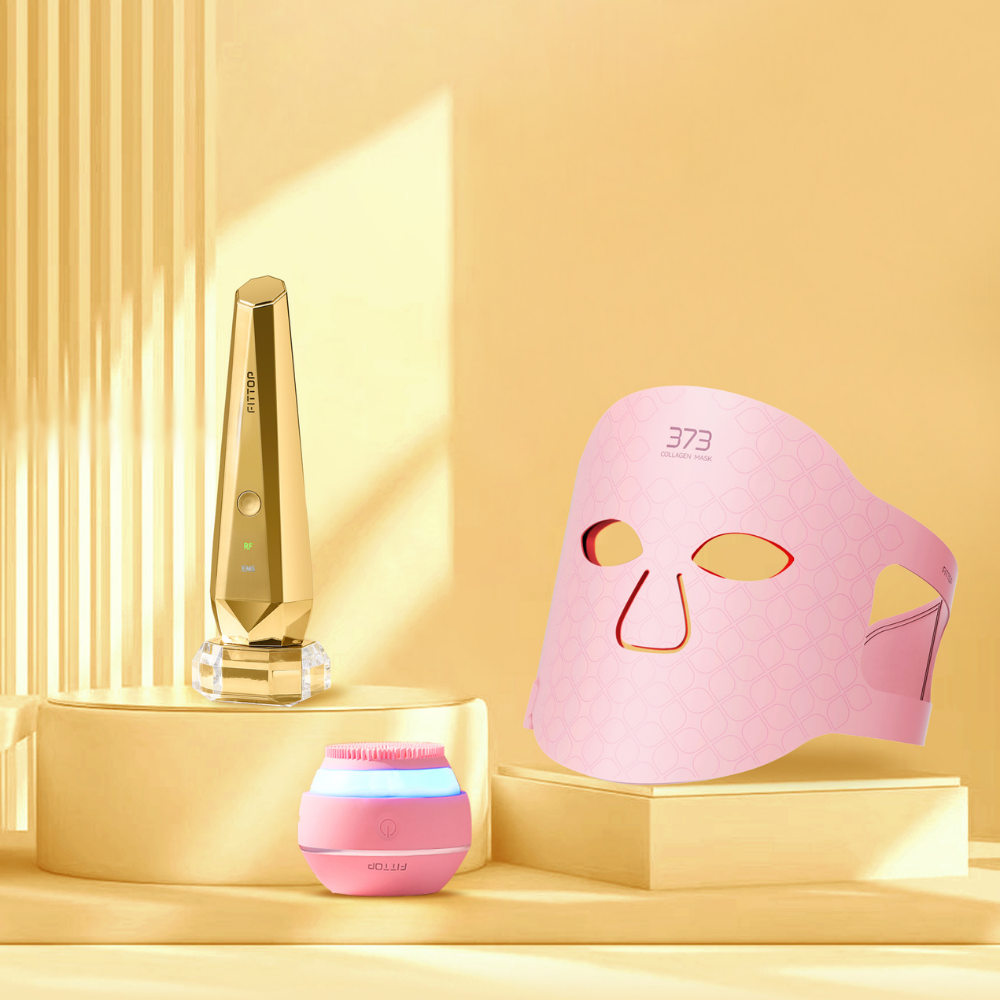Microcurrent Therapy VS LED Light Therapy
Time:2024-1-2
Can microcurrent therapy and LED light therapy be used simultaneously? The answer is yes. Combining microcurrent and light therapy can produce a synergistic effect where 1+1 is greater than 2. Facial treatments have come a long way in recent years, with new technologies and techniques constantly emerging. Two popular treatments that have gained a lot of attention are microcurrent and LED therapy. But can you use these two treatments together? In this article, we’ll explore the benefits of microcurrent and LED therapy, and whether or not they can be used together for optimal results.

What is Microcurrent Therapy?
Microcurrent therapy is a non-invasive facial treatment that uses low-level electrical currents to stimulate the muscles and tissues in the face. This treatment is often referred to as a “natural facelift” because it can help tighten and tone the facial muscles, resulting in a more youthful appearance.
How Does Microcurrent Therapy Work?
During a microcurrent therapy session, a trained esthetician will use a handheld device to deliver low-level electrical currents to the muscles and tissues in the face. These currents mimic the body’s natural electrical signals, which helps to stimulate the production of collagen and elastin, two proteins that are essential for maintaining firm and youthful skin.
The electrical currents also help to improve circulation and lymphatic drainage, which can reduce puffiness and improve the overall appearance of the skin. This treatment is painless and has no downtime, making it a popular choice for those looking for a non-invasive facial treatment.
What is LED Therapy?
LED therapy, also known as light therapy, is a non-invasive treatment that uses different wavelengths of light to target specific skin concerns. This treatment has been used for decades to treat a variety of skin conditions, including acne, wrinkles, and hyperpigmentation.
How Does LED Therapy Work?
During an LED therapy session, a device emitting different wavelengths of light is placed close to the skin. The light penetrates the skin and is absorbed by the cells, triggering a cellular response. Different wavelengths of light have different effects on the skin, making LED therapy a versatile treatment for a range of skin concerns.
For example, blue light is often used to treat acne, as it has antibacterial properties that can help kill acne-causing bacteria. Red light, on the other hand, is known for its anti-aging benefits, as it can stimulate collagen production and improve skin elasticity.

The Benefits of Microcurrent and LED Therapy
Both microcurrent and LED therapy have their own unique benefits, but when used together, they can provide even more impressive results.
Improved Skin Tone and Texture
Microcurrent therapy can help improve muscle tone and tighten the skin, while LED therapy can help reduce the appearance of fine lines and wrinkles. When used together, these treatments can help improve the overall tone and texture of the skin, resulting in a more youthful and radiant complexion.
Reduced Inflammation and Redness
LED therapy has been shown to have anti-inflammatory effects, making it an effective treatment for reducing redness and inflammation in the skin. When used in conjunction with microcurrent therapy, which can improve circulation and lymphatic drainage, these treatments can help reduce puffiness and redness in the face.
Increased Collagen Production
Both microcurrent and LED therapy can stimulate collagen production, but when used together, they can have an even more significant impact. Collagen is essential for maintaining firm and youthful skin, and by increasing its production, these treatments can help reduce the appearance of fine lines and wrinkles.
Improved Product Absorption
One of the lesser-known benefits of microcurrent and LED therapy is that they can help improve the absorption of skincare products. The electrical currents used in microcurrent therapy can help open up the pores, allowing skincare products to penetrate deeper into the skin. LED therapy, on the other hand, can help stimulate the cells, making them more receptive to the active ingredients in skincare products.

Can You Use Microcurrent and LED Therapy Together?
The short answer is yes, you can use microcurrent and LED therapy together. In fact, many estheticians and skincare professionals recommend using these treatments together for optimal results.
Combining Microcurrent and LED Therapy
When combining microcurrent and LED therapy, it’s important to use the treatments in the correct order. Microcurrent therapy should always be done first, as it helps to tighten and tone the muscles in the face. LED therapy can then be used to target specific skin concerns, such as wrinkles or acne.
Frequency of Treatments
The frequency of treatments will depend on your individual skin concerns and goals. For best results, it’s recommended to have microcurrent therapy once a week for 4-6 weeks, followed by LED therapy once a week for 4-6 weeks. After this initial treatment plan, maintenance sessions can be done every 4-6 weeks.
Other Considerations
While microcurrent and LED therapy can be used together, there are a few things to keep in mind before undergoing these treatments.
Consult with a Professional
Before undergoing any facial treatment, it’s important to consult with a trained esthetician or skincare professional. They can assess your skin and recommend the best treatment plan for your individual needs.
Avoid Overlapping Treatments
It’s important to avoid overlapping treatments when using microcurrent and LED therapy together. For example, if you have recently had Botox or fillers, it’s recommended to wait at least two weeks before undergoing microcurrent or LED therapy.
Follow Aftercare Instructions
After undergoing microcurrent and LED therapy, it’s important to follow any aftercare instructions provided by your esthetician. This may include avoiding certain skincare products or activities for a period of time to ensure the best results.
FITTOP Offers Devices That Combine Microcurrent and Phototherapy
FITTOP creatively integrates microcurrent, phototherapy, and radiofrequency technology to maximize the anti-aging effects. Radiofrequency and microcurrent energy work together to effectively reduce facial wrinkles. FITTOP utilizes 3.3MHz radiofrequency energy and double-turbo microcurrent energy, allowing more energy to reach the dermis layer and promote the regeneration of collagen and elastin proteins. Phototherapy plays a reparative role, addressing issues such as facial acne, dullness, and redness. It simultaneously combats aging and resolves other facial concerns.

Conclusion
Microcurrent and LED therapy are both effective facial treatments on their own, but when used together, they can provide even more impressive results. These treatments can help improve skin tone and texture, reduce inflammation and redness, increase collagen production, and improve product absorption. If you’re considering these treatments, be sure to consult with a professional and follow any aftercare instructions for the best results.



